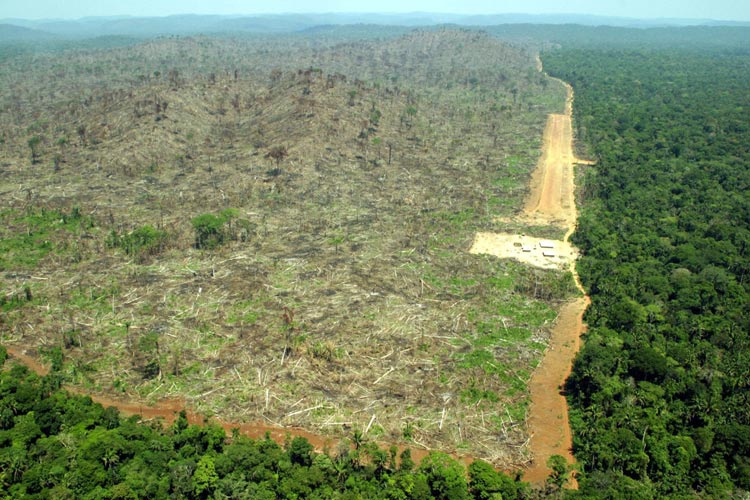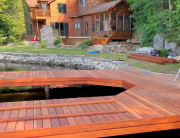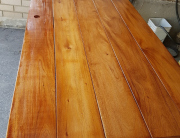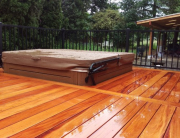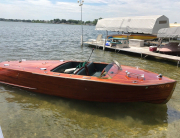Ipe Wood Decking – Logged From The Amazon Unsustainably
In provisional statistics released by the Brazilian government in November, satellite images record a devastating loss of 5,843 sq. km (2,255 sq. miles) between August 2012 and July 2013. Much of the land in this area is covered by old-growth rainforests containing valuable hardwoods.
Brazil is regressing in terms of protecting ipe hardwood forests.
On the 25th anniversary of Brazil’s momentous shift in land law and policy which guaranteed indigenous rights to ancestral land over economic interests and exploitation of natural resources including rainforests with hardwood trees, Dilma Rousseff’s government threatened to undermine these rights through Proposed Complementary Law (PLP) 227.
The contentious proposal seeks to modify Article 231 of the Brazilian Constitution, essentially revoking indigenous rights to land resources, including old-growth rainforests, over ‘public interest’. These interests are held by the megalomaniac “ruralista” block – an upper class elite of Brazilian agriculturalists with tremendous economic and political clout. This human force of nature collides with the natural life-force of one of the worlds’ most important hardwood rainforests.
Despite international and domestic pressure to preserve the old-growth hardwood rainforest, which including all growth ages accounts for 61.2% of Brazil’s land area[1], a new Forestry Code was introduced by Rousseff’s left wing government in 2012.
The cost of the Ipe wood decking market to indigenous communities
The Amazon is now a playground for ipe hardwood loggers.
Under the new code, obligatory forest cover reduces to 50% from the previous 80% legal requirement. This translates to 190 million acres of lost forest[2]. Species that reproduce at low replacement rates, which includes most hardwoods, are harvested at rates surpassing the rate of replacement.
The rainforest also now exists at the mercy of economic and agricultural industrialists driven by capitalist market needs for iron ore, beef, leather, soya, ‘green gold’ such as Ipe wood decking, teak and other tropical lumber products.
Brazil is furnishing a lucrative soft wood and hardwood export market accounting for 34%[3] of its GDP at the expense of the loss of the Amazonian rain forest ecosystem and indigenous communities.
Off the Atlantic Coast of Northern Brazil, on the inner most eastern forest lays the home of the Awa of Juriti, an indigenous Indian tribe of only 355. The Awa are one of the isolado (isolated) groups on the brink of extinction due to illegal logging and extraction of iron ore found in the Carajas mountains.
The destruction of the rainforest undertaken by a wide variety of operations as dictated by international markets and trade agreements encroaches on the Awa’s peaceful coexistence with the rainforest. For millennia, the Awa and numerous other indigenous communities along the Amazonian belt have led a life that is intricately connected to that of the forest.
The forest is revered, highly regarded with strong semblance to that of a deity. This reverence has preserved the biodiversity and ecosystem of the forest. Indigenous communities are careful to return to the land that which belongs to it. Their sustainable approach has in fact contributed to our understanding of the need to preserve the flora and fauna of rainforests and inspired international action such as the 1992 UN Statement of Forest Principles[4].
However, all the political inclinations on the sustainable management of the forest are no match for Western conglomerates, trade blocs, and fat cat ruralistas commanding in excess of $20 million per commodity originating from the Amazon.
In the 1980s, the Awa settlement came under threat from a European Economic Community (EEC) and World Bank funded programme to extract iron ore deposits. Through a $600 million grant, the Brazilian government built a railway for transportation of iron ore from the mines to the coast. The railway impinged on Awa ancestral land, disrupting their communities’ circle of life and bringing with it ‘railroad settlers’ – loggers taking advantage of previously untread terrain that now led the path to virgin tropical hardwoods. All species and ages of hardwood trees have been under threat since this tactic has been used by a wide variety of players in the Brazilian industry.
The settlers unfortunately brought with them disease and destruction, diminishing the already minute Awa population. Violence is rife in the forest; Awa who obstruct the loggers are regularly shot; and the animal population has migrated due to the noise and destruction caused by the timber mills.
In exchange for a minimum of 13.6 tonnes of iron ore over a 15 year period and an estimated $32.7 million[5] in pine and tropical plywood exports, a third of the Awa’s northeastern territory has been destroyed.
Empowering indigenous communities
The Awa have lost their dignity.
Stellar homes are furnished in grandeur spectacles of handcrafted Brazilian hardwood with its classic reddish-brown tint; summer barbeques are enjoyed in patios in Ipe wood decking; and entire industries are constructed from the ground up from steel panels derived from iron ore deposits.
Meanwhile, the Awa and other indigenous communities have no homes, no food, and a bleak prospect of protection of their forest.
Historically, the recognition of indigenous rights has somewhat prevailed over economic interests. There have been mini victories. This year, a prominent spokesperson for the Paiter-Surui from Rondonia in North-West Brazil convinced the World Bank to restructure a regional development programme to benefit local indigenous groups. Through engaging with the private sector, Google has come on board to assist tribes to use digital technology to map and monitor the forest.
In September 2012, Talisman Energy, a Canadian oil and gas company announced its decision to cease oil exploration activities in the Peruvian Amazon. The Achuar of Peru had successfully saved their forest. And just earlier this year, the Brazilian government took military action to protect the Awa from threats and violence from illegal loggers.
But is this enough?
Unscrupulous lands sharks still persist, the allure of profits from illegal logging are beckoning. World trade in commodities must continue and power hungry politicians will continue to lay in bed with Business.
We can change the discourse in regards to the business models which feed the destruction of biodiversity – we are not saying that no trees should be cut down; we are advocating the protection of rare, high quality, and useful wood species. Owners of the land can harvest softwood trees yet the government may step in to prevent the harvesting of trees such as hardwood, including mahogany wood.
The purchasing power for ipe wood decking or any unsustainably harvested lumber products lies in our hands. We can make informed decisions as consumers of timber sources and in order to inform this decision companies acting as distributors should be willing to review and disclose their supply chains. We can raise awareness of the plight of indigenous communities and amazonian rainforest deforestation. Targeting hardwood loggers is a great way to educate consumers and facilitate real change in local government oversight.
Passive resistance by consumers, who are beginning to choose only sustainable plantation lumbers, will begin to turn the tables and lead to greater victories for the Amazon.
[1] World Bank Statistics, Forest area % of land areahttp://data.worldbank.org/indicator/AG.LND.FRST.ZS <accessed 10 December 2013> [2] The New York Times,Brazil’s leader facing defining decision o Bill relaxing protection of Forests,16 May 2012http://www.nytimes.com/2012/05/17/world/americas/brazils-president-dilma-rousseff-faces-defining-decision-over-forest-bill.html?_r=0<accessed 10 December 2013> [3] Exports as share of GDPhttp://www.quandl.com/brazil<accessed 11 December 2013> [4] United Nations, Statement on Forest Principles,http://www.un.org/documents/ga/conf151/aconf15126-3annex3.htm<accessed 10 December 2013> [5] Global wood, http://globalwood.org/<accessed 11 December 2013>